Size of Mold Spores
Mold spores range from 1 to 100 microns in diameter, but the bulk of mold spores are between 2 and 20 microns (U.S. EPA, MSUM, PLOS).
“Micron” is a unit of particle size measurement equal to one one-thousandth of one millimeter (1/1,000 mm).
One micron is also equal to 1/25,400th of 1 inch.
If the smallest mold spores were placed end to end, it would take 25,000 of them to form a 1-inch line.
And that line would be 1,000X thinner than a sharp pencil point.
It’s been estimated that 1,000,000 mold spores could fit into a space the size of a No. 2 pencil eraser (5 mm/5,000 microns, approximately squared), and that active fungal growth on a surface may produce 1,000,000 spores per square inch.
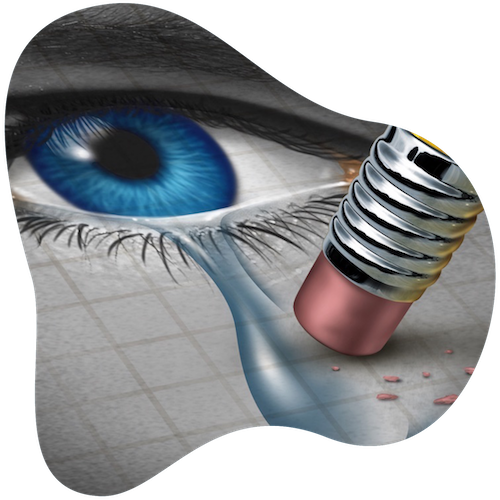
“Active fungal growth on a surface may produce a spore density of 1 million spores per square inch.”
American Industrial Hygiene Association (AIHA), “Facts About Mold” (2011)
“Microns” are also referred to as and are the same as “micrometers.”
The symbol for this unit of measurement is μm.
Most mold spores are on the smaller end of the 1-100 micron range, and are between about 2 and 20 or 2 and 40 microns.
Though all are incredibly small, the variation and range in published mold spore measurements stems from there being more than 100,000 species of mold (Washington State Department of Health).
As the naked or unassisted human eye can’t see anything smaller than 40 microns (0.04mm), almost all mold spores are invisible on their own.
Minnesota State University Moorhead’s (MSUM) Department of Environmental Health & Safety notes in a 2011 publication that “things in the mold world are very small,” and that “most fungal spores range from 1 to 100 microns in size with many types between 2 and 20 microns.
“People with good vision,” the University notes, “may see 80-100 micron particles unaided. Below that level, magnification is “generally necessary.”
“To put things in perspective, you could place over 20 million five micron spores on a postage stamp,” MSUM says.
“You could place over 20 million five micron spores on a postage stamp.”
Minnesota State University Moorhead (MSUM), Department of Environmental Health & Safety, “Mold Spores,” June 2011
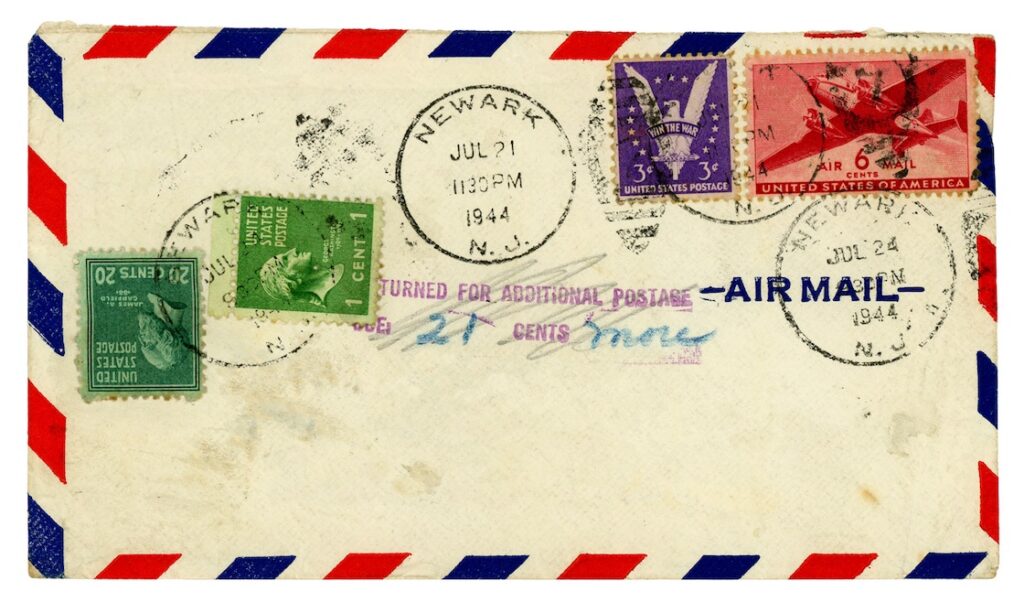
Putting “small” to scale
| Item | Diameter (⌀) in Microns (μm) |
| Virus (smallest) | 0.02 microns |
| Mycotoxins | 0.1 microns |
| Virus (largest) | 0.5 microns |
| Dust particle (small) | 0.5 microns |
| Mold spore (‘small’) | 1-2 microns |
| Strand of spider web | 3 microns |
| Plastic wrap (thickness) | 10-12 microns |
| Mold spore (‘medium’) | 20 microns |
| Mold spore (‘large’) | 40-100 microns |
| Viewing limit of the naked eye | 40 microns |
| Dust particle (large) | 100 microns |
| Sharp pencil point | 1,000 microns |
| New pencil eraser | 5,000 microns |
| U.S Quarter (0.955 in.) | 24,257 microns |
| One inch (1”) | 25,400 microns |
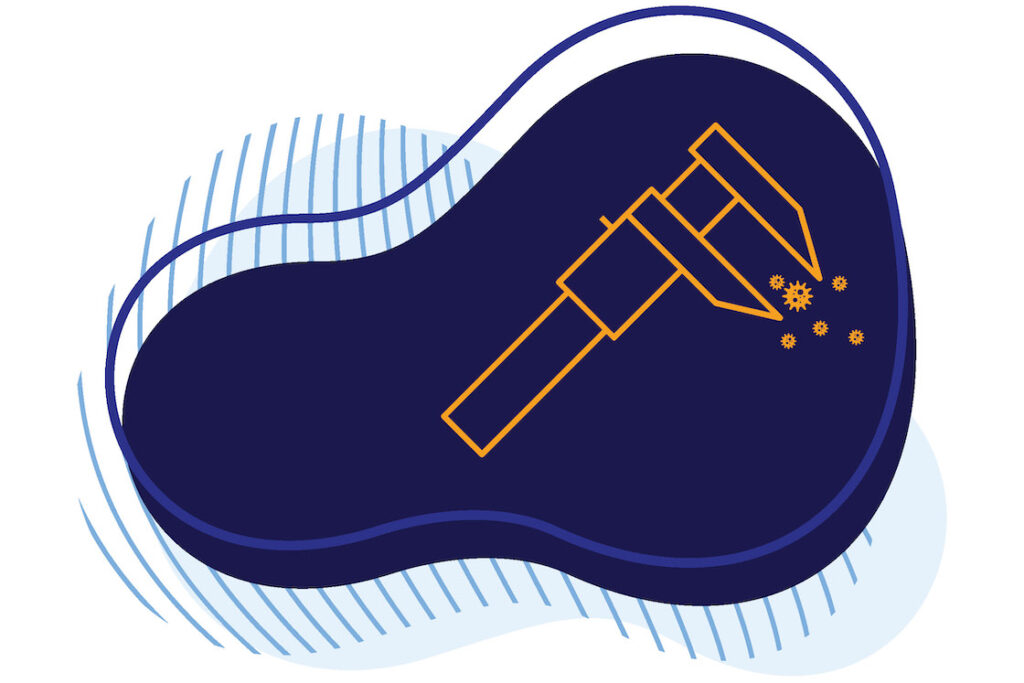
Mold spores v. viruses
“Most viruses,” according to Encyclopædia Britannica, “vary in diameter from 20 nanometres (nm; 0.0000008 inch) to 250–400 nm” but the largest are “about 500 nm in diameter and are about 700–1,000 nm in length.”
Converting these measurements into microns, the smallest viruses are 0.02 microns, while the largest viruses are about 0.5 microns in diameter, and 0.7-1 micron in length.
Thus:
- The smallest viruses are 50-100X smaller than the smallest mold spores (0.02 μm v. 1-2 μm).
- The largest viruses are 200X smaller than the largest mold spores (0.5 μm v. 100 μm).
- The smallest mold spores are twice as big as the largest viruses (1 μm v. 0.5 μm).
Mold spores v. dust
Mold can be mistaken for household dust, which provides an ideal food source for it (Crista, 2018).
As with mold, spotting a single dust particle (0.5-100 microns) is impossible or impractical, but as the two begin to accumulate in parts of a home, they can become more obvious.
“Diameter” is the distance of a straight line across or through a circular object.
Thus you could say that the smallest mold spores are 25 to 45 times thinner than a human hair. (A single human hair ranges from 50-90 microns in diameter, with 70 microns being an agreed upon average.)
In that sense, 25-45 mold spores can fit across the width of a human hair; or an average of 35 mold spores per hair-strand-space.
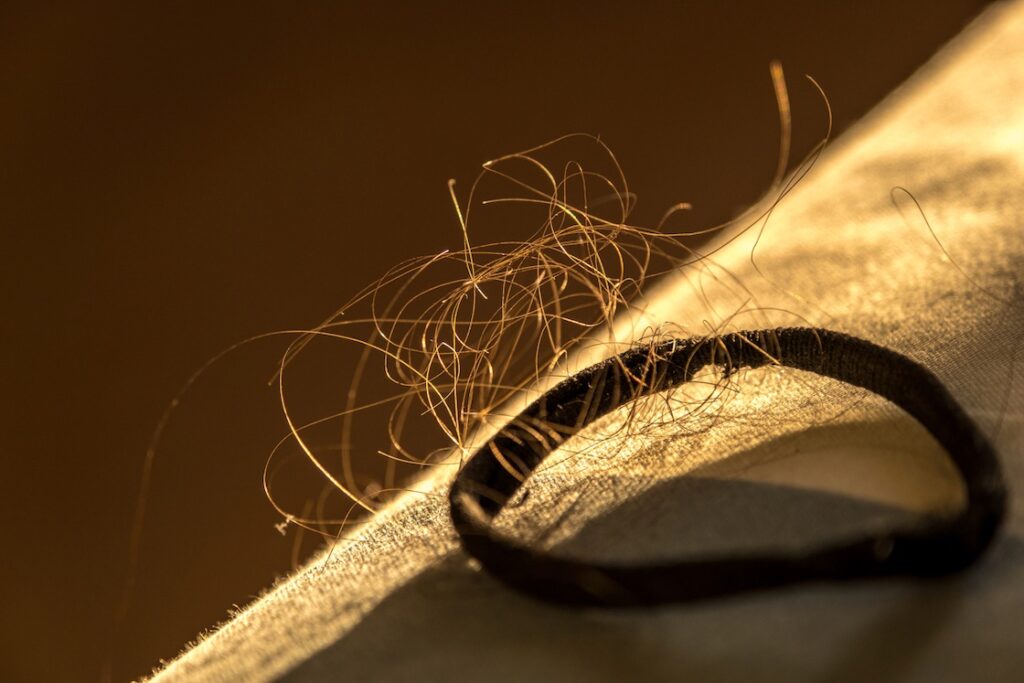
Mold spore, hyphae, mycotoxin sizes
Mold spores are one of three interdependent entities whose size you may wish to be aware of.
All viable molds grow in the form of hyphae.
Certain types of mold produce mycotoxins.
(From the Greek terms for fungus + toxin. [Mycology is the study of fungi.])
Mycotoxins, according to the World Health Organization, are produced by “certain types of mold,” and can cause a “variety of adverse health effects” including “immune deficiency and cancer,” and thus “pose a serious health threat” to humans. (WHO, May 2018)
| Item | # of Microns |
| Mold spore | 2-100 microns (U.S. EPA) |
| Hyphae | 2-10 microns (LibreTexts) |
| Mycotoxins | 0.1 microns (Moldpedia) |
Looking for mold
“We have found thorough visual inspections and/or detection of problem areas via musty odors are more reliable [than ‘routine air sampling’].”
U.S. CDC, “Testing and Remediation of Dampness and Mold Contamination,” Last reviewed: Feb. 25, 2022
Most mold spores are invisible to the naked or unaided eye. The few that are individually visible would be indistinguishable: Is it dirt, dust, pollen, mold, or something else?
Most but not all problematic mold growth that would be visible to the naked eye is also hidden—behind cabinetry, under floorboards, under tiles, and inside walls.
“Looking for mold” in a home is arguably important, but if you were to find it, it would be well beyond the point of a single spore.
Sight alone isn’t always an effective early-detection method of mold, as mold spores are so infinitesimally small, and when mold does grow to become visible, it may still be hidden. It typically avoids well-lit areas and abhors sunshine.
Smell is usually the best way to detect the presence of hidden mold, while routinely keeping an eye out for and quickly resolving water spills and leaks.
But sight does play a role in mold detection and remediation:
- Look often for water leaks in areas of the house where plumbing is installed. (The kitchen and bathroom are the most common, but rooms adjacent to them should also be paid attention.)
- If you can’t see mold but you smell an earthy, musty, damp, or muggy smell, assume you probably have mold and that it’s hidden somewhere—whether inside cabinets, under the sink, behind walls, under floorboards, etc. Secondary data can help you substantiate whether you actually have mold: Illness, intuition, and the history of your home with regard to moisture, floods, and water.
- Since the search for mold can become an endless fear-filled pursuit, call a mold remediation specialist before driving yourself crazy over a foul smell. They have moisture meters, tests, and other equipment that can help you.
- These earthy, damp, or musty smells (think of a rotten wood or wet sock smell) come well after the fact of mold growth and stem from chemicals the mold produces (called VOCs). They can cause headaches, fatigue, nausea, nasal irritation, and more.
Because mold spores are essentially everywhere, it is most prudent to focus on moisture control.
To control moisture is to control mold.
Size matters: How to use this information
Unless you’re on a science class assignment, you’re probably wondering what this all means to your health and your home.
That is — How is this information actually useful?
a. Moisture, water control are most important
It validates that water and moisture control are the most important parts of any mold prevention plan. You can control water and you can keep airborne moisture counts (humidity) at a safe level. You can not “kill” or remove all of the mold spores in any home or office. And you do not need to.
b. Dusting plays a part in mold control
It reinforces the fact that dusting and keeping a clean house is an important part of mold prevention. Dust is a perfect food source for mold. Some mold inspections entail swabs and samples taken from dusty areas of a home for this very reason.
c. Certain a/c filters may help
It allows you to improve your air conditioner’s filter to help filter out particles of this size. An a/c filter with a “MERV rating” of 6, 8, or 11 is considered best for filtering mold spores and other similarly sized particulates out of the air. A standalone High-Efficiency Particulate Air (HEPA) air filtration system can also be bought and used, though this is likely not necessary for persons whose bodies are not overly sensitive.
d. Wear personal protective equipment (PPE) when cleaning and removing mold
It shows the importance of wearing proper personal protective equipment when cleaning or removing mold. An N95 filtering facepiece respirator (FFR) filters out at least 95% of particles 0.3 microns and larger. (U.S. CDC). To clean or remove more than a very small amount of mold, mold experts advise the use of disposable full body Tyvek suits, safety goggles or glasses, respirators, gloves, and “booties” that are worn over regular footwear.
U.S. EPA-Recommended Mold Removal PPE:
- Rubber Gloves: Long gloves of natural rubber, nitrile, or polyurethane should be worn from finger tips to mid-forearm.
- Goggles: Eye goggles or a full-face respirator should be worn to protect the eyes. Goggles with open vent holes are “not acceptable” for mold removal.
- Respirator: A NIOSH-approved respirator should be worn while removing mold.
- Clothing: Disposable clothing is recommended for “medium and large” remediation projects to prevent the spread of mold and reduce one’s contact with mold.
- Body suit: Body suits may be either disposable paper coveralls or a full body suit of Tykvek. Disposable paper coveralls are suggested for use when “limited protection is warranted,” and Tyvek suits are recommended for use when “full protection” is required. If a Tyvek suit is being worn, all gaps and openings should be sealed, which professional mold remediators usually do by using duct tape. (U.S. EPA, Mold Course Chapter 6, “Containment and PPE”).

Inhalation of mold spores
Some mold spores are small enough to be easily inhaled.
Qualifying as particulate matter, or “particle pollution,” mold spores of less than 10 micrometers in diameter [and all other particulates of this size] may “get deep into your lungs” and “may even get into your bloodstream,” says the U.S. EPA.
Mold spores (and other particulate matter) that are less than 2.5 micrometers in diameter “pose the greatest risk [to health],” according to the U.S. Environmental Protection Agency.
The U.S. EPA defines the size of mold spores as follows: “microscopic spores (2 – 100 microns [µm] in diameter).”
Elsewhere, the U.S. EPA discusses “Particulate Matter” or “Particle Pollution” and the risks involved in its inhalation.
The EPA says that “particles less than 10 micrometers in diameter can get deep into your lungs… [or] bloodstream.” And that “particles less than 2.5 micrometers in diameter…pose the greatest risk to health.”
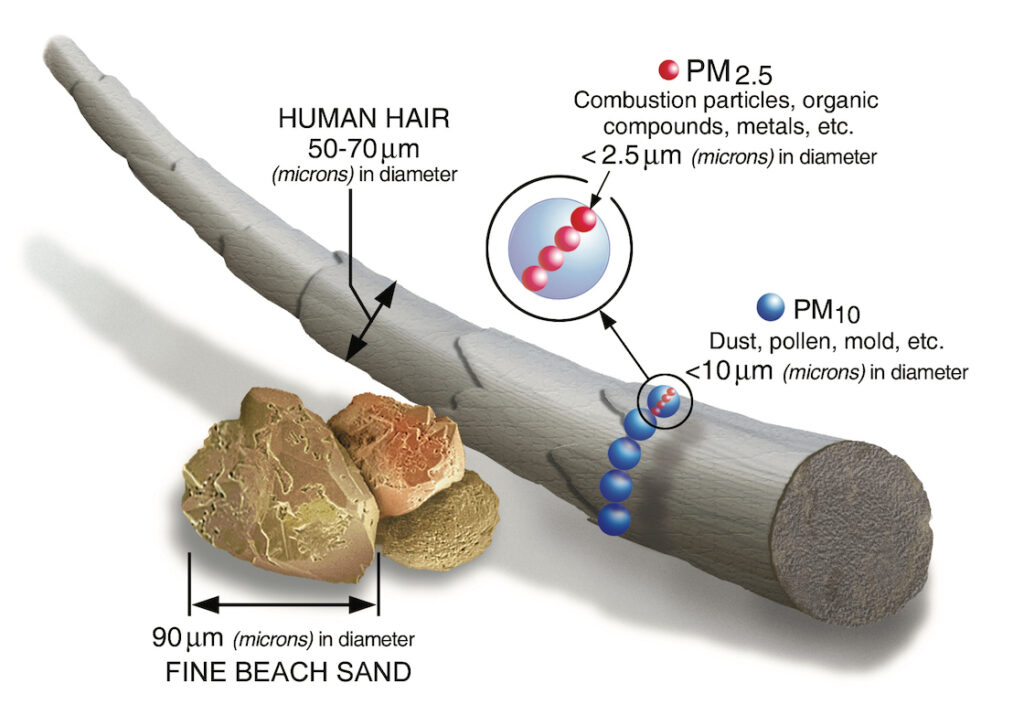
Though mold is not immediately mentioned by the EPA in the resources above, the agency makes the connection in a September 2003 public service brochure available on its website.
It says in part, “Particle pollution is a mixture of microscopic solids and liquid droplets suspended in air. This pollution, also known as particulate matter, is made up of a number of components, including… fragments of pollen or mold spores.)
“The size of particles is directly linked to their potential for causing health problems. Small particles less than 10 micrometers in diameter pose the greatest problems, because they can get deep into your lungs, and some may even get into your bloodstream.”
How many spores makes mold?
Mold spores are often likened to the seeds of a plant, usually grass.
It could be postulated that a certain number of these seeds will inevitably die off or fail to grow roots even if they come in contact with water, while other seeds (spores) in the vicinity will undoubtedly grow and cause problems if not caught and controlled.
Ultimately, at least in theory, a single spore, which can lie dormant for decades, can cause mold to grow. (Sciencing, 2018)
[The “single spore” debate is more involved than is covered here.]
That said, it is totally possible to live in harmony with mold—and you are probably doing so right now!
If a humid bathroom, closet, or crawl space causes you adverse reactions, you are, even still, living in harmony with other molds—millions of spores—in other areas, even if only in the outdoors.
There is no need to kill all mold or to try to get rid of all mold spores.
To conquer moisture is to conquer mold.
And a clean, dry home is the best assurance of avoiding most mold problems.
Good luck.

